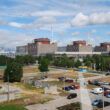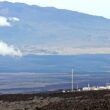Rush Holt Commentary
September 27, 2011
The wedge rubric that Pacala and Socolow laid out in 2004 was very useful because it illustrated that, although the problem of climate change mitigation is daunting, it could be addressed by taking a finite number of steps using existing technologies. If addressing the problem of climate change required a tectonic change akin to the discovery of electricity (a dismissive comment Socolow attributes to a former secretary of energy), we might as well call it quits, but the wedge paper actually gives us hope.
Although public attention to the climate change problem seems to have evaporated, the problem has not gone away. Indeed, as Socolow points out, it has gotten worse. And so, when public interest and matching political interest return, the wedges rubric will once again be useful.
Socolow refers to the human tendency to shoot the messenger, even referring to Galileo, but I am pleased to note that no ecclesiastical inquisition has summoned the authors thus far. And Socolow remains undeterred in envisioning ways of engaging and sometimes challenging public perception, such as presenting alternative pictures of our future, ranging from one that is mildly unpleasant to one in which climate change monsters abound.
Representative Rush Holt
Democrat of New Jersey
EXPERT COMMENTARY













